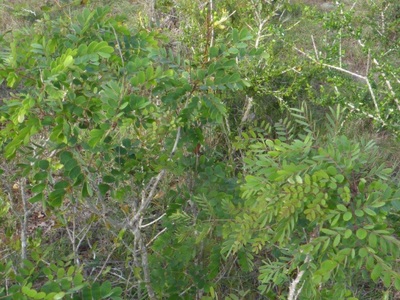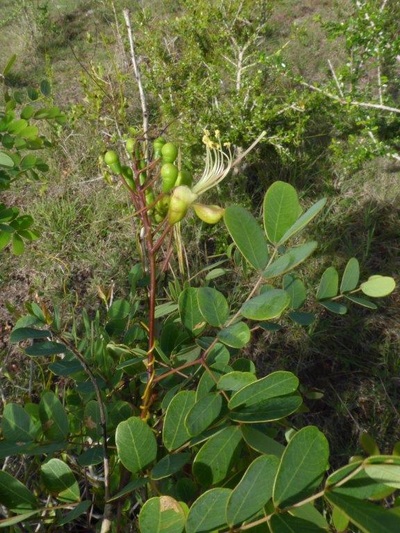Pieridae : Coliadinae
Phoebis orbis (Poey, 1832)
Orbis Sulphur
Phoebis orbis (Poey, 1832)
Orbis Sulphur
Previously known as: Aphrissa orbis
Description and Similar Species: Wingspan 65-74mm. Sexually dimorphic. Males are whitish above with a large bright yellow patch at the base of the forewing, and the underside is pale yellow with some small red or blackish/brown markings and eyespots. Females are bright yellow on both sides with a prominent brown border and discal spot on the upper forewing and four brown spots on the trailing edge of the hindwing. On the underside both wings have bold reddish markings and borders with a large discal spot on the forewing and two white dark-edged spots on the hindwing.
Range: Endemic to the West Indies where it is found on Cuba and Hispaniola only, though there has been one recorded stray in S Florida in April 1973. The endemic subspecies orbis is found on Cuba and the subspecies browni is found only on Hispaniola.
Status: Said to be common in west and central Cuba (Smith) though we have not found it so on our visits to date. Rarely found in the east of Cuba. More often found in wooded highlands though sometimes seen lower down and at the coast. Specimens from Hispaniola are larger and the genitalia of the two subspecies are distinct and it will be interesting to see if DNA indicates that they should be split into two species.
Nectar Plants: Caesalpinia, Ageratum, Ixora, Vernonia, Hibiscus, Antigonon and is also found mud-puddling.
Larval Foodplants: Caesalpinia (Poinciana) pulcherrima and Caesalpinia bahamensis Lam. ssp. bahamensis (Fabaceae-Caesalpinioideae).
Description and Similar Species: Wingspan 65-74mm. Sexually dimorphic. Males are whitish above with a large bright yellow patch at the base of the forewing, and the underside is pale yellow with some small red or blackish/brown markings and eyespots. Females are bright yellow on both sides with a prominent brown border and discal spot on the upper forewing and four brown spots on the trailing edge of the hindwing. On the underside both wings have bold reddish markings and borders with a large discal spot on the forewing and two white dark-edged spots on the hindwing.
Range: Endemic to the West Indies where it is found on Cuba and Hispaniola only, though there has been one recorded stray in S Florida in April 1973. The endemic subspecies orbis is found on Cuba and the subspecies browni is found only on Hispaniola.
Status: Said to be common in west and central Cuba (Smith) though we have not found it so on our visits to date. Rarely found in the east of Cuba. More often found in wooded highlands though sometimes seen lower down and at the coast. Specimens from Hispaniola are larger and the genitalia of the two subspecies are distinct and it will be interesting to see if DNA indicates that they should be split into two species.
Nectar Plants: Caesalpinia, Ageratum, Ixora, Vernonia, Hibiscus, Antigonon and is also found mud-puddling.
Larval Foodplants: Caesalpinia (Poinciana) pulcherrima and Caesalpinia bahamensis Lam. ssp. bahamensis (Fabaceae-Caesalpinioideae).
Egg
Larva
Foodplants and Habitat
















